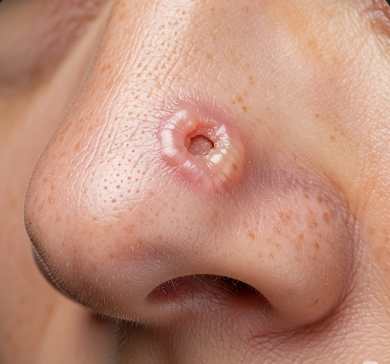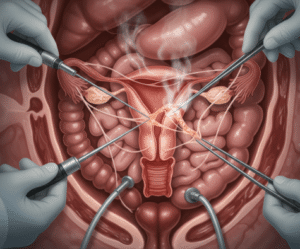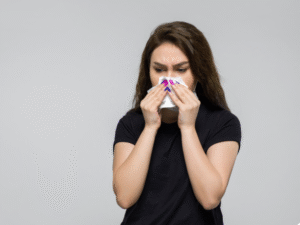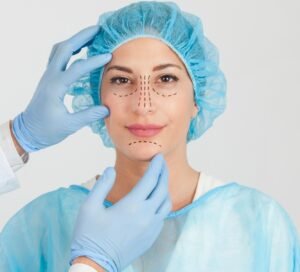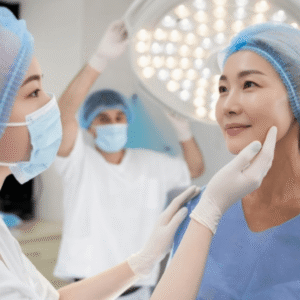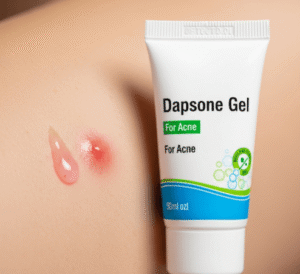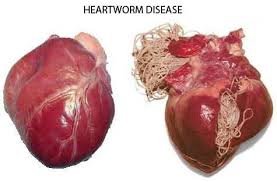Overview
Basal Cell Carcinoma (BCC) is the most common type of skin cancer, arising from the basal cells in the epidermis, which are responsible for producing new skin cells. While BCC typically grows slowly and rarely spreads (metastasizes) to other parts of the body, it can cause significant local tissue damage if left untreated. Early detection and treatment are crucial to prevent disfigurement and ensure favorable outcomes.
In Korea, dermatology clinics and specialized cancer centers provide advanced diagnostic and treatment options for BCC. Korean dermatologists utilize cutting-edge techniques such as Mohs micrographic surgery, laser therapy, and photodynamic therapy to remove tumors effectively while minimizing scarring. Patients benefit from expert care, ongoing monitoring, and preventive counseling to reduce recurrence risk.
What is Basal Cell Carcinoma?
Basal Cell Carcinoma is a malignant tumor originating in the basal cells of the skin, which are located in the lower layer of the epidermis. BCC usually develops on sun-exposed areas such as the face, neck, scalp, ears, and hands, although it can appear anywhere on the body.
BCC is classified into several subtypes based on its appearance and growth pattern:
- Nodular BCC: The most common type, presenting as a pearly or flesh-colored bump with visible blood vessels.
- Superficial BCC: Flat, scaly, reddish patches, often mistaken for eczema or psoriasis.
- Morpheaform (sclerosing) BCC: Appears as a scar-like, pale area, often more aggressive and harder to detect.
- Pigmented BCC: Darker in color, sometimes resembling a mole.
Although BCC is generally slow-growing and has a low risk of metastasis, untreated lesions can infiltrate surrounding tissues, leading to functional impairment or cosmetic issues.
Symptoms
The signs and symptoms of Basal Cell Carcinoma can vary depending on the subtype:
- A pearly, waxy, or flesh-colored bump, often with small blood vessels visible on the surface
- Flat, reddish, scaly patches resembling a rash or eczema
- Scar-like, pale, or shiny areas with poorly defined borders
- Open sores that may bleed, ooze, or crust and fail to heal
- Darkly pigmented lesions in pigmented BCC
- Slow growth over months or years, sometimes unnoticed until significant tissue changes occur
Patients may also experience itching, tenderness, or minor pain in affected areas. BCC rarely causes systemic symptoms such as fever or fatigue.
Causes
The primary cause of Basal Cell Carcinoma is long-term exposure to ultraviolet (UV) radiation from the sun or tanning beds. UV radiation damages the DNA in basal cells, leading to abnormal growth and tumor formation.
Other contributing factors include:
- Fair skin, light-colored eyes, and blond or red hair (increased sensitivity to UV radiation)
- History of sunburns, especially during childhood
- Chronic exposure to sunlight due to outdoor occupations or lifestyle
- Immunosuppression, such as in organ transplant recipients or patients with chronic diseases
- Genetic conditions, including Basal Cell Nevus Syndrome (Gorlin syndrome), which increases susceptibility
- Exposure to carcinogenic chemicals like arsenic
Risk Factors
Factors that elevate the risk of developing BCC include:
- Age over 50: Cumulative UV exposure increases with age
- Gender: Men are slightly more likely to develop BCC due to occupational and lifestyle exposures
- Geographical location: Living in regions with high sun intensity, such as tropical or subtropical climates
- Previous skin cancer: History of BCC or other skin cancers increases the likelihood of recurrence
- Frequent use of tanning beds and artificial UV exposure
- Immunosuppression or chronic illness that weakens the body’s defenses
Complications
Although BCC rarely spreads to other organs, untreated tumors can cause significant local complications:
- Tissue destruction: BCC can erode surrounding skin, cartilage, and bone, especially on the face.
- Scarring and disfigurement: Large or recurrent tumors may require extensive surgical removal.
- Functional impairment: Tumors near the eyes, nose, or lips can affect vision, breathing, or oral function.
- Recurrence: Even after treatment, BCC can recur in the same or nearby areas.
Early diagnosis and treatment are essential to minimize these risks.
Prevention
Preventing Basal Cell Carcinoma primarily focuses on protecting the skin from UV damage:
- Use broad-spectrum sunscreen with SPF 30 or higher on exposed skin
- Wear protective clothing, hats, and sunglasses when outdoors
- Avoid peak sun hours (10 a.m. to 4 p.m.) and seek shade
- Avoid tanning beds and artificial UV sources
- Perform regular skin self-examinations to detect new or changing lesions
- Routine dermatology check-ups, especially for individuals with fair skin or previous skin cancers
Korean dermatology clinics emphasize patient education, UV protection strategies, and early detection programs to reduce skin cancer incidence.
Treatment Options in Korea
Korean hospitals provide comprehensive treatment for Basal Cell Carcinoma, combining medical, surgical, and minimally invasive approaches:
1. Diagnosis:
- Physical examination and dermoscopy to evaluate suspicious lesions
- Skin biopsy for histopathological confirmation
- Imaging tests for large or invasive tumors to assess depth and involvement of underlying tissues
2. Medical Treatments:
- Topical therapies: Imiquimod or 5-fluorouracil for superficial BCC
- Photodynamic therapy (PDT): Uses light-activated drugs to destroy cancer cells
3. Surgical Treatments:
- Excisional surgery: Removal of the tumor with a margin of healthy tissue
- Mohs micrographic surgery: Precision technique that removes the tumor layer by layer while preserving healthy tissue; ideal for facial or recurrent BCC
- Curettage and electrodessication: Scraping and cauterization for small, low-risk tumors
4. Follow-up and Monitoring:
- Regular skin exams: To detect recurrence or new lesions
- Patient education: UV protection, skin care, and awareness of early warning signs
- Multidisciplinary care: Dermatologists, plastic surgeons, and oncologists collaborate for optimal cosmetic and functional outcomes
Korea’s modern dermatology and oncology centers are recognized for combining advanced surgical precision, minimally invasive techniques, and expert follow-up care to achieve excellent results with minimal scarring.
In conclusion, Basal Cell Carcinoma is the most common form of skin cancer, primarily caused by UV exposure. Early detection, protective measures, and advanced treatment options are critical to preventing tissue damage, recurrence, and cosmetic or functional complications. Korea offers comprehensive care through expert dermatology services, minimally invasive surgery, and patient-centered education to ensure effective management and long-term skin health.

